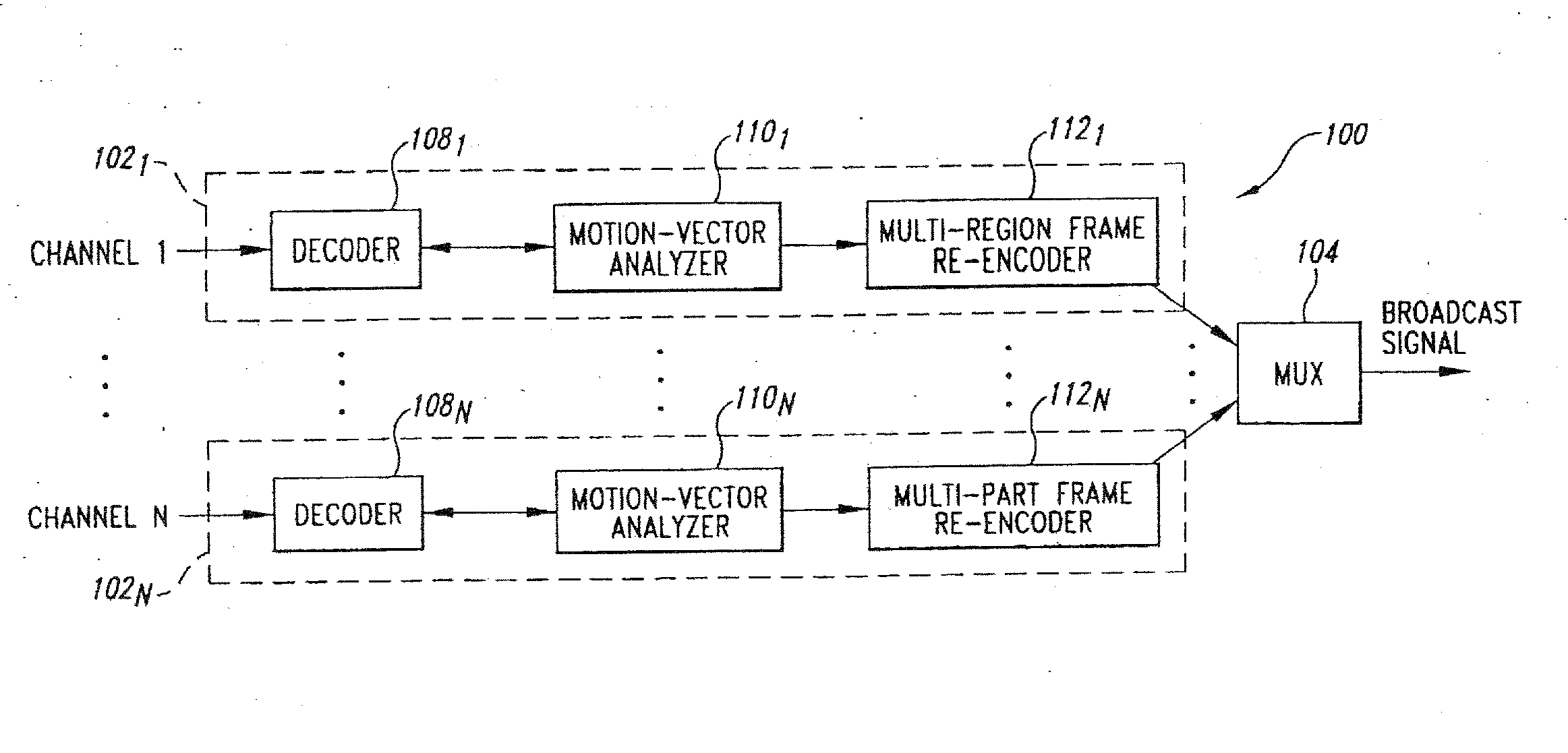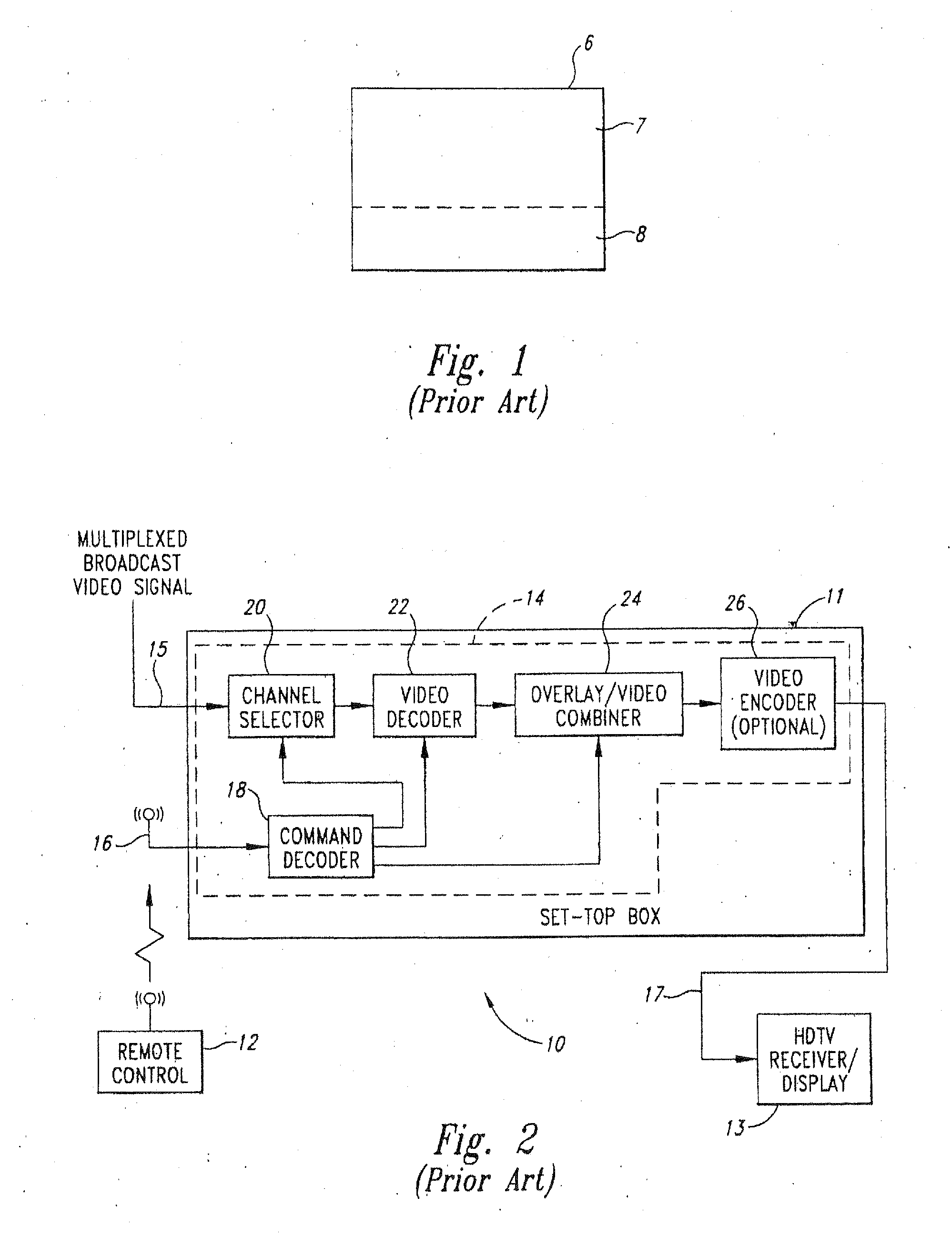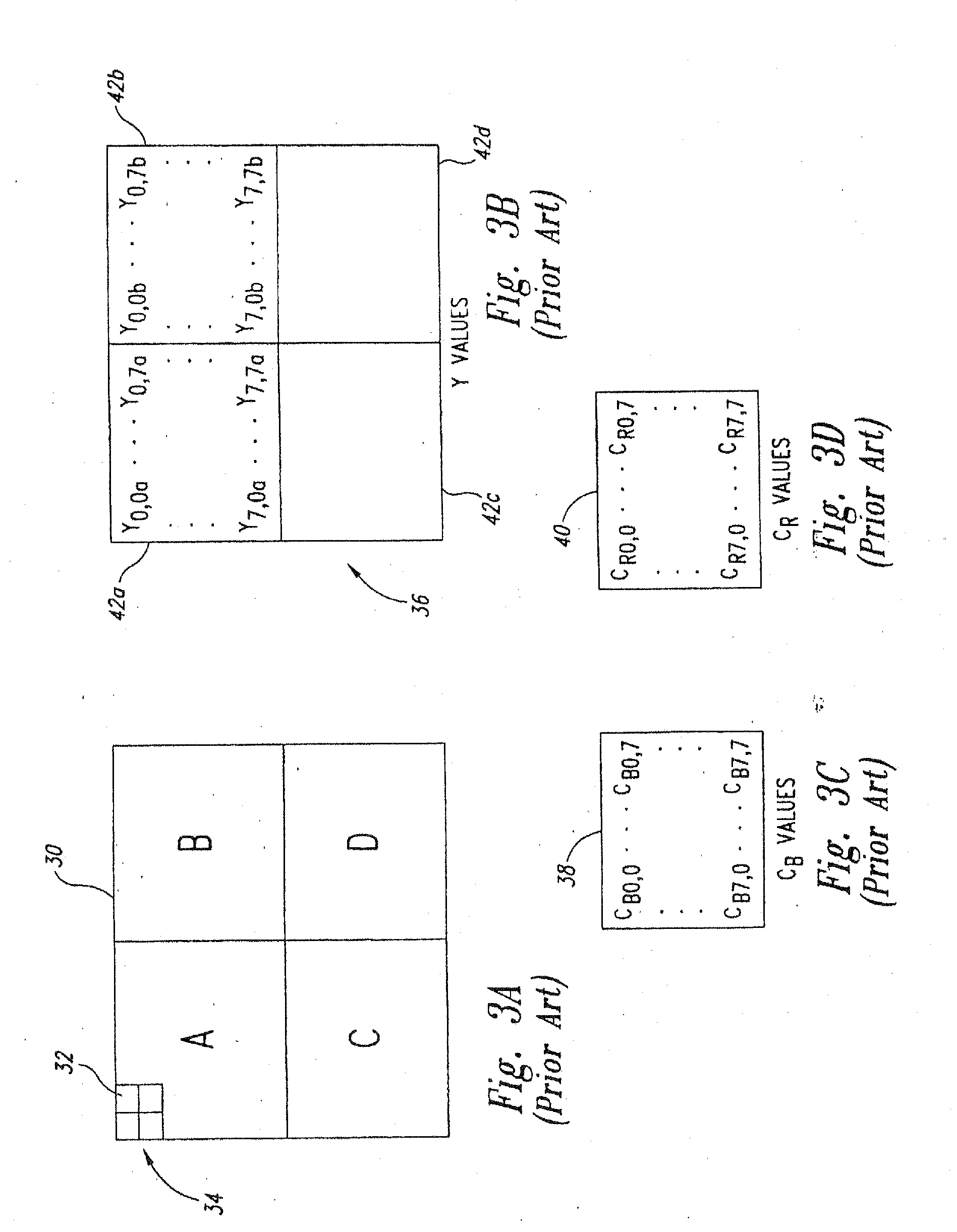Circuit and method for modifying a region of an encoded image
a technology of encoded images and circuits, applied in the field of image processing techniques, can solve the problems and achieve the effect of reducing the processing circuit, cost and complexity
- Summary
- Abstract
- Description
- Claims
- Application Information
AI Technical Summary
Benefits of technology
Problems solved by technology
Method used
Image
Examples
Embodiment Construction
Formatting Encoded Video Images Into Respective Multiple Independent Regions
[0045]FIG. 7 is a block diagram of a video-frame formatter 100 according to an embodiment of the invention. The formatter 100 includes video processing circuits 1021-102N for respectively formatting encoded video-channel signals 1-N received from respective broadcaster networks (e.g., FOX, CNN). Specifically, the processing circuits 102 format the frames of each respective channel signal such that the frames each have multiple independent regions. The processing circuits 102 then provide the respective processed channel signals 1-N to a multiplexer 104, which combines all of the processed channel signals into an encoded multiplexed broadcast video signal. Although described as formatting video frames, the formatter 100 can be designed to modify video fields or still images.
[0046] For example purposes, the structure and operation of the video processing circuit 1021 is discussed in detail, it being underst...
PUM
 Login to View More
Login to View More Abstract
Description
Claims
Application Information
 Login to View More
Login to View More - R&D
- Intellectual Property
- Life Sciences
- Materials
- Tech Scout
- Unparalleled Data Quality
- Higher Quality Content
- 60% Fewer Hallucinations
Browse by: Latest US Patents, China's latest patents, Technical Efficacy Thesaurus, Application Domain, Technology Topic, Popular Technical Reports.
© 2025 PatSnap. All rights reserved.Legal|Privacy policy|Modern Slavery Act Transparency Statement|Sitemap|About US| Contact US: help@patsnap.com



